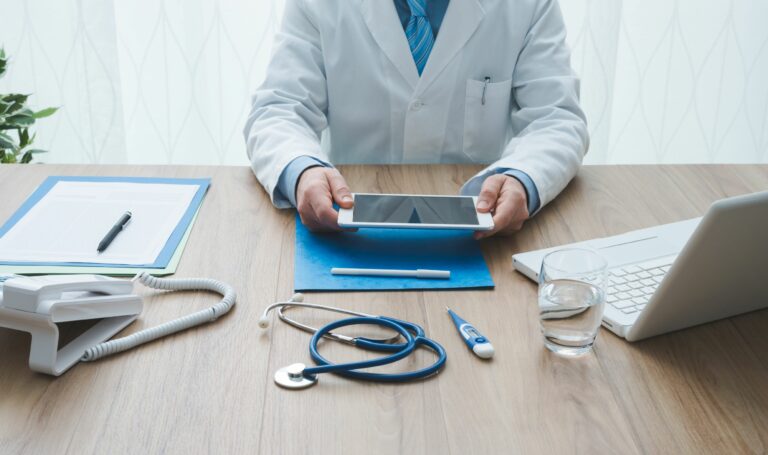The COVID-19 pandemic has had a significant impact on the management of hypertension. The effects of the SARS-CoV-2 virus on hypertension and the increased risk of developing hypertension related to COVID-19 infection have led to a need for new strategies in managing hypertension during the pandemic.
According to the American College of Cardiology, hypertension is more prevalent among COVID-19 patients than in the general population. COVID-19 infection can cause hypertension by damaging the blood vessels, leading to chronic hypertension, or by activating the renin-angiotensin system, leading to acute hypertension. People with long COVID-19, who have prolonged symptoms, have an increased risk of developing hypertension. Furthermore, the severe acute respiratory syndrome coronavirus (SARS-CoV-2) can cause post-covid symptoms such as hypertension. Studies have also shown that hypertension is more prevalent among patients with severe COVID-19, and those who are hospitalized for COVID-19 have a higher risk of death from hypertension.
Remote Patient Monitoring (RPM) has emerged as a key strategy in managing hypertension in COVID-19 patients without pre-existing hypertension. RPM allows healthcare providers to remotely collect and analyze patient data, such as blood pressure readings, to manage patient care and treatment. This can include telemedicine appointments, medication adjustments, and lifestyle recommendations. Additionally, RPM allows for patients with hypertension to be monitored more closely, which can lead to earlier detection and treatment of complications related to hypertension.
COVID-19 and Hypertension
Hypertension, also known as high blood pressure, is a common condition that affects millions of people worldwide. It occurs when the force of blood against the artery walls is too high, which can lead to serious health complications, including heart disease, stroke, and kidney disease. Hypertension is a risk factor for many other diseases and conditions, and it’s important that it is detected and treated early.
COVID-19, caused by the SARS-CoV-2 virus, has had a significant impact on hypertension management. The virus has been found to increase the risk of hypertension among patients infected with SARS-CoV-2. The COVID-19 pandemic has also led to an increased prevalence of hypertension among the general population.
A retrospective cohort study and systematic review and meta-analysis from University College London have shown that hypertension is a risk factor for severe disease and death from COVID-19. Furthermore, angiotensin converting enzyme inhibitors (ACE inhibitors) and angiotensin receptor blockers (ARBs) are associated with hypertension and are commonly used to lower blood pressure and reduce the risk of complications related to hypertension.
It is important to closely monitor and manage hypertension in COVID-19 patients to prevent hypertension from developing or worsening after a COVID-19 infection, and to reduce the risk of complications related to hypertension.
Effects of COVID on Hypertensive Patients
COVID-19 has had a significant impact on hypertension management. The effects of the SARS-CoV-2 virus on hypertension and the increased risk of developing hypertension related to COVID-19 infection have led to a need for new strategies in managing hypertension during the pandemic.
The impact of COVID-19 on hypertension has been seen in changes in blood pressure levels among hypertensive patients. Studies have shown that patients with COVID-19 may experience an increase in both systolic and diastolic blood pressure. This can be due to the activation of the renin-angiotensin system, which leads to acute hypertension, or due to the damage of the blood vessels which causes chronic hypertension.
Patients with hypertension and COVID-19 are at a higher risk of severe disease and hospitalization. This is because hypertension is an independent risk factor for severe COVID-19 and it can worsen the symptoms, leading to more complications such as heart failure, stroke, kidney disease and more.
Additionally, the COVID-19 pandemic has caused disruptions in the delivery of healthcare services, which can lead to delays in the diagnosis and management of hypertension. This, in turn, can lead to an increase in hypertension-related complications among patients with COVID-19.
Furthermore, many patients found to have hypertension related to COVID-19 infection may not have had a pre-existing hypertension, which highlights the need for close monitoring and management of hypertension in COVID-19 patients. This is important to prevent hypertension from developing or worsening after a COVID-19 infection and to reduce the risk of complications related to hypertension in the context of the pandemic.
Post COVID-19 Hypertension Treatment
The following steps can help patients post COVID-19 to mitigate Hypertension:
- Monitor blood pressure regularly: It is important to monitor blood pressure regularly, especially in patients who have had COVID-19 or have developed hypertension related to COVID-19 infection. This can be done through regular visits to the doctor or through remote patient monitoring.
- Keep track of symptoms: Patients who have had COVID-19 should be aware of any symptoms that may indicate hypertension, such as headaches, dizziness, or chest pain. Keeping track of these symptoms can help in early detection and management of hypertension.
- Medication adjustments: Patients with hypertension who have had COVID-19 may need adjustments to their medications, such as ACE inhibitors or angiotensin receptor blockers, to manage their hypertension. These medications help to lower blood pressure and reduce the risk of complications related to hypertension.
- Lifestyle changes: Lifestyle changes, such as eating a healthy diet, exercising regularly, and quitting smoking can help to manage hypertension. Patients who have had COVID-19 should be encouraged to make these changes to reduce their risk of complications related to hypertension.
- Stress management: Stress can raise blood pressure, and patients who have had COVID-19 may be more prone to stress due to the pandemic. Stress management techniques, such as yoga, meditation, and deep breathing can help to lower blood pressure and manage hypertension.
- Regular check-ups: Regular check-ups with a healthcare professional are important to monitor the progression of hypertension and make necessary adjustments to treatment.
- Monitoring for complications: hypertension can lead to other complications such as heart failure, stroke, kidney disease and more. Patients who have had COVID-19 should be monitored for these complications and treated as necessary.
- Vaccination: Patients with hypertension should get vaccinated against COVID-19 as hypertension is a risk factor for severe disease.
Role of Remote Patient Monitoring in Managing Post-COVID Hypertension
The COVID-19 pandemic has highlighted the need for new strategies in managing hypertension, particularly when it comes to monitoring and adjusting treatment in a timely manner. Remote Patient Monitoring (RPM) has emerged as a key strategy in managing hypertension in patients who have had COVID-19 or have developed hypertension related to COVID-19 infection.
RPM allows healthcare providers to remotely collect and analyze patient data, such as blood pressure readings, to manage patient care and treatment. This can include telemedicine appointments, medication adjustments, and lifestyle recommendations. Additionally, RPM allows for patients with hypertension to be monitored more closely, which can lead to earlier detection and treatment of complications related to hypertension.
The use of RPM in hypertension management can be especially beneficial for patients who have had COVID-19, as it allows for the monitoring of hypertension in the context of the ongoing pandemic. By using RPM, healthcare providers can make adjustments to treatment in a timely manner, reducing the risk of hypertension-related complications.
RPM can also be used to monitor the effectiveness of medications, such as ACE inhibitors and angiotensin receptor blockers, in managing hypertension in COVID-19 patients. These medications are commonly used to lower blood pressure and reduce the risk of complications related to hypertension. By monitoring blood pressure levels remotely, healthcare providers can adjust the dosage or switch to a different medication if needed.
Revolutionizing Post-COVID Hypertension Care with DrKumo RPM Solutions
DrKumo, a leading provider of RPM solutions, is revolutionizing post-COVID hypertension care with its state-of-the-art technology. Their RPM solutions are designed to be user-friendly and powered by a HIPAA-compliant, mobile-enabled, continuous real-time monitoring and AI/ML engine. This allows patients to manage their health conditions in the comfort of their homes and supports healthcare providers with real-time intelligence for timely intervention.
DrKumo’s RPM solutions allow healthcare providers to remotely collect and analyze patient data, such as blood pressure (BP) readings, to manage patient care and treatment. This includes telemedicine appointments, medication adjustments, and lifestyle recommendations. Additionally, DrKumo’s RPM solutions allow for patients with hypertension to be monitored more closely, which can lead to earlier detection and treatment of complications related to hypertension.
DrKumo’s RPM solutions can also be used to monitor the effectiveness of medications, such as ACE inhibitors and Angiotensin Receptor Blockers (ARBs), in managing hypertension in COVID-19 patients. These medications are commonly used to lower blood pressure and reduce the risk of complications related to hypertension. By monitoring blood pressure levels remotely, healthcare providers can adjust the dosage or switch to a different medication if needed.
Takeaways
The COVID-19 pandemic has had a significant impact on hypertension management. The effects of the SARS-CoV-2 virus on hypertension and the increased risk of developing hypertension related to COVID-19 infection have led to a need for new strategies in managing hypertension during the pandemic. Remote Patient Monitoring (RPM) has emerged as a key strategy in managing hypertension in COVID-19 patients without pre-existing hypertension. RPM allows healthcare providers to remotely collect and analyze patient data, such as systolic blood pressure readings, to manage patient care and treatment.
The prevalence of hypertension among COVID-19 patients and the effects of COVID-19 on hypertension management have led to an increased need for cardiovascular disease management and the use of antihypertensive medication. Also, COVID-19 patients who test positive for ACE2 enzyme are at a higher risk of developing hypertension.
In the context of the ongoing pandemic, it is crucial to closely monitor and manage hypertension in COVID-19 patients to prevent hypertension from developing or worsening after a COVID-20 infection and to reduce the risk of complications related to hypertension. This can be done through regular visits to the doctor or through remote patient monitoring. This approach is in line with the World Health Organization’s recommendations for clinical practice in 2021 for the management of hypertension in the context of the ongoing coronavirus pandemic.
Want to ensure proper monitoring and management of hypertension through remote patient monitoring solutions? Contact DrKumo now.








